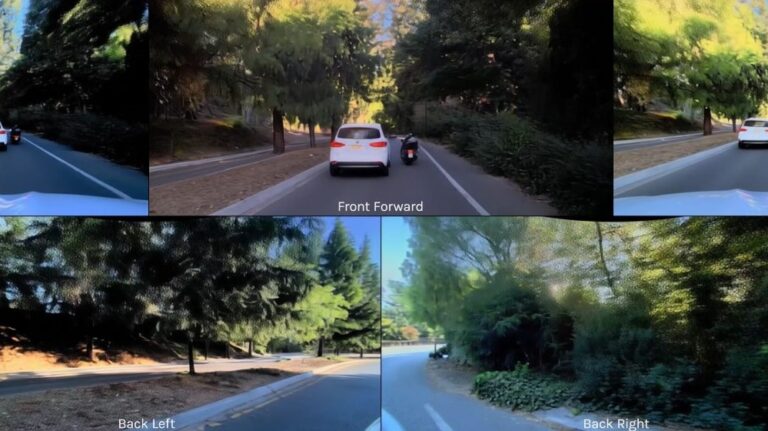Wayve has launched GAIA-2, the latest iteration of its video-generative world model for assisted and automated driving. Building on the success of GAIA-1 (which it describes as the first generative world model for autonomy), GAIA-2 introduces greater diversity, realism, and control in synthetic video data generation. This offboard AI-powered tool is designed to accelerate the development and validation of Wayve’s end-to-end AI software for driving.
Generative world models are transforming autonomous driving development by providing an efficient, safe, scalable solution to augment traditional real-world data collection for training and evaluating AI driving models. Unlike general-purpose text or video generative models, Wayve says GAIA-2 is purpose-built for assisted and automated driving, maintaining consistency across multiple camera viewpoints and generating diverse geographies and driving conditions.
According to Wayve, GAIA-2 introduces key advancements that enhance its ability to support training and validation of advanced driving technologies:
Enhanced fine-grained control over driving dynamics: GAIA-2 enables greater scene generation with control over the ego-vehicle behavior, the behavior of other road agents, and environmental factors such as road configurations (lane structure, intersections, crossings), weather, and time of day.
Expanded diversity: GAIA-2 is trained on a large-scale, curated dataset from multiple countries (UK, US, and Germany), diverse vehicle platforms (cars and vans), and various sensor configurations and frame rates. This enables the model to generate realistic, adaptable and corner case-rich synthetic data, aligned with the surround camera set-up on modern software-defined vehicle architectures.
Multi-camera spatial and temporal consistency: GAIA-2 ensures spatial and temporal coherence across multiple camera viewpoints, providing a surround-view perspective of driving environments. This is crucial for training and testing driver assistance and automated driving AI, as it replicates real-world multi-camera setups used in these systems today.
Before deploying driver assistance and automated driving systems on public roads, system developers must rigorously validate and verify their AI models across everyday and safety-critical driving scenarios. GAIA-2 enables this at scale by augmenting real-world data with highly controlled, repeatable and diverse synthetic scenarios. For example, in the US, a crash occurs approximately once every 535,000 miles driven, and only 0.064% of all crashes involve collisions with a tree. Using GAIA-2, Wayve can simulate multiple common safety-critical scenarios, generating rare and high-risk events that can be impractical or unsafe to capture through real-world data collection alone. This stress-tests Wayve’s AI driving models, ensuring they are prepared for both common and safety-critical situations in a controlled environment, according to the company.
“GAIA-2 provides a way to systematically and controllably test safety-critical edge-case data in a virtual environment with infinitely more tests than we can do in the real world,” commented Jamie Shotton, chief scientist, Wayve. “Our goal is not just to replicate past driving behaviour but to create richer, more challenging test and training environments that push autonomous driving capabilities further. With enhanced realism and scalability, GAIA-2 will accelerate the verification and validation of Wayve’s assisted and automated driving technology globally.
Read more about GAIA-2 in this technical blog from Wayve.


